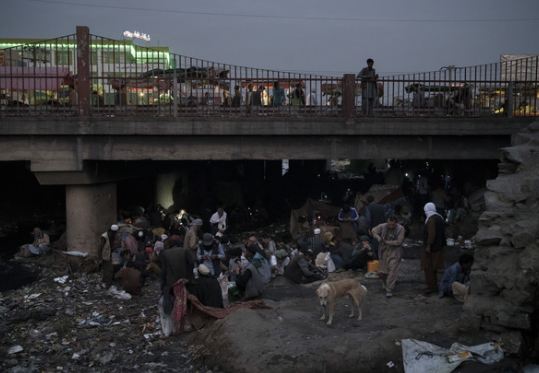Agencies
UNITED NATIONS: Methamphetamine trafficking in and around Afghanistan has surged in recent years, even as the Taliban has curbed heroin trafficking since taking power, according to a UN report published Sunday.
“The surge in methamphetamine trafficking in Afghanistan and the region suggests a significant shift in the illicit drug market and demands our immediate attention,” Ghada Waly, executive director of the UN Office of Drugs and Crime, a Vienna-based agency, said in a statement.
The Taliban, who returned to power in August 2021, announced a ban the following April on the production of narcotics in Afghanistan.
“Regional coordination targeting the diversion and smuggling of chemical precursors is essential to stopping the continued expansion of illicit methamphetamine manufacture in and around Afghanistan,” Waly said.
“This new UNODC report aims to provide the international community with vital information to tackle the growing synthetic drug threat”.
UNODC findings of a drastic, nearly twelvefold increase in seizures of the drug in five years from 2.5 tons in 2017 to 29.7 tons in 2021, further suggest that heroin trafficking has continued, although at a lower rate. Methamphetamine trafficking, however, has intensified since the ban, indicating a rapid expansion of the drug’s manufacture and a possible reshaping of illicit drug markets long dominated by Afghan opiates.
Seizures of methamphetamine of suspected Afghan origin have been reported in places as far away as the European Union, the Near and Middle East, South-east Asia and Eastern Africa, it was pointed out.
The report, ‘Understanding Illegal Methamphetamine Manufacture in Afghanistan’, analyses the different precursors used to produce the drug.
Coverage of suspected methamphetamine manufacture in Afghanistan has often focused on the use of the ephedra plant, which grows abundantly in the region and contains ephedrines that can be extracted to make the drug, the report said.
Although cheaper to use in the short-term, the large amount of ephedra needed, unreliable harvests and the intensive labour involved make it unlikely that the rapidly expanding methamphetamine trade in Afghanistan can depend on the ephedra plant alone. Common cold medications and industrial-grade chemicals are more efficient and cost effective for the manufacture of methamphetamine and thus pose a far bigger threat, the report warns.
Such chemicals are legally produced and traded in large quantities in the region and could be accessible to methamphetamine producers, according to the report. The emphasis on ephedra risks undermining effective law enforcement responses, which need to be regionally coordinated and focus on preventing and curbing the diversion and smuggling of bulk chemical precursors.
Different regions and countries are affected by different levels of trafficking of heroin and methamphetamine, it said.
Overall, South-West Asia was identified as having a transshipment role for methamphetamine to onward wholesale markets, while South-East Europe maintains an important transshipment role in the trafficking of heroin towards the main market in West and Central Europe.











